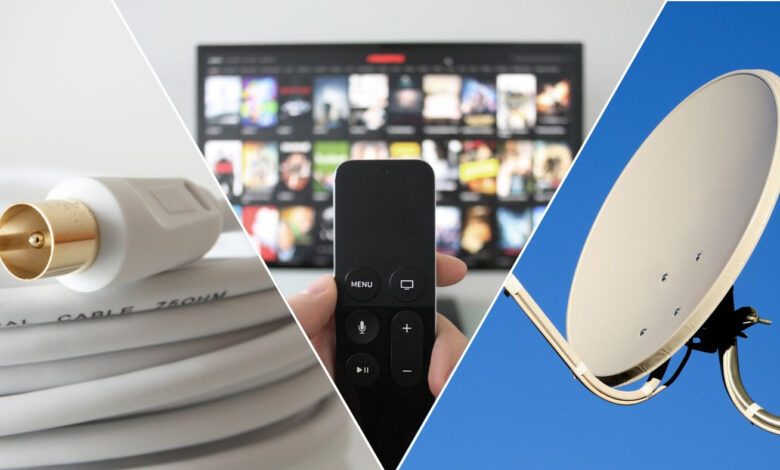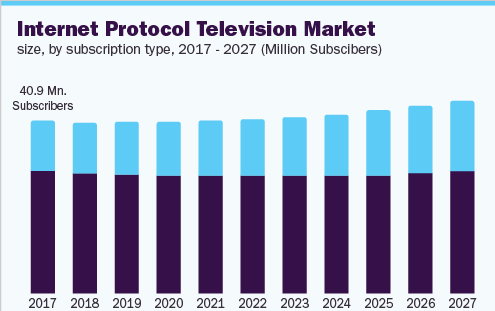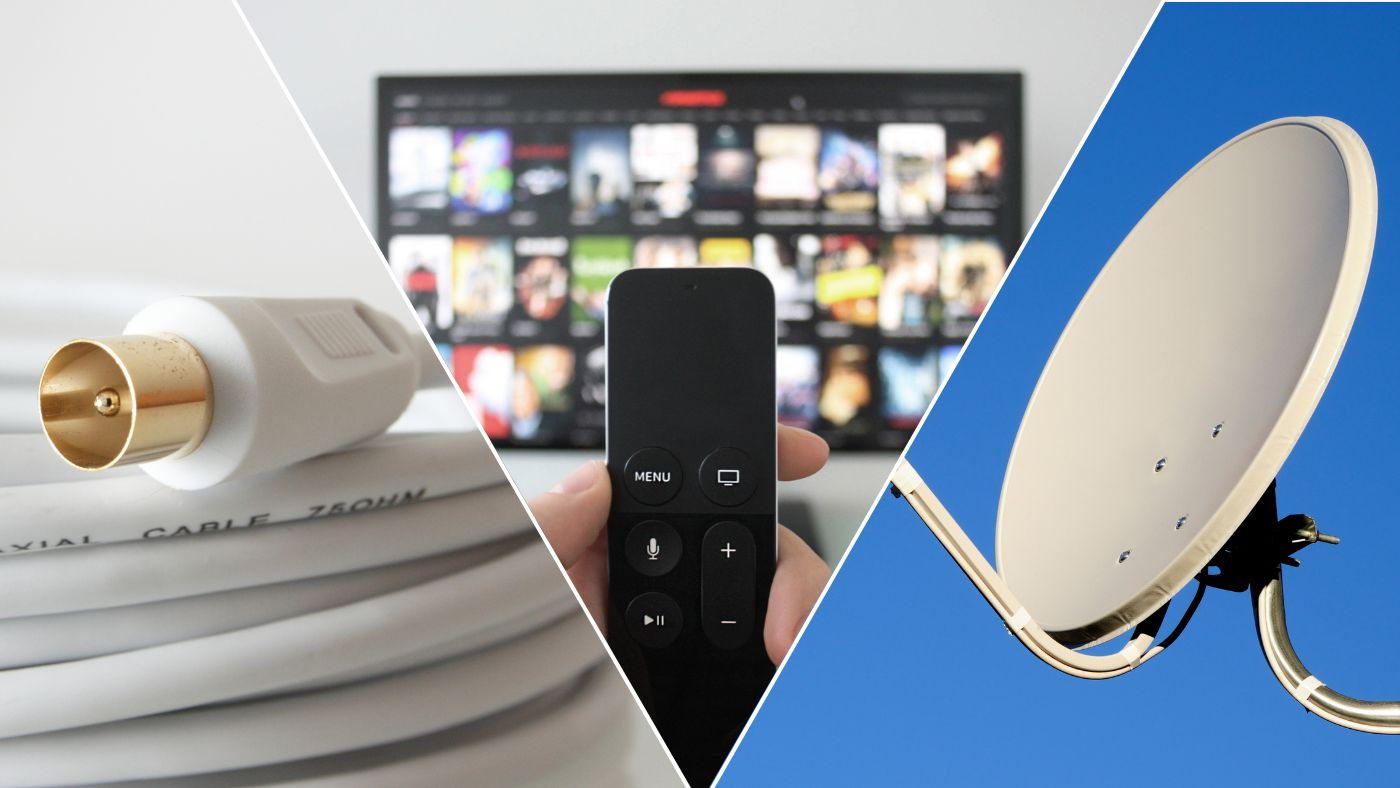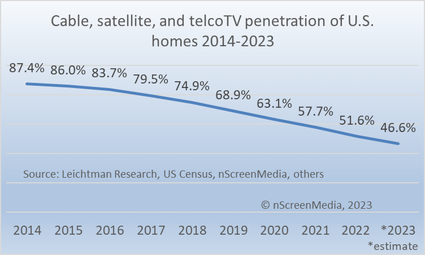Is IPTV better than cable: The impact of IPTV on traditional cable TV

Introduction:
The world of television has undergone significant changes in recent years. With the advent of the Internet, viewers have been given a plethora of options to choose from in terms of content and delivery mechanisms. One of the most significant changes has been the rise of IPTV or Internet Protocol Television. IPTV is a digital television broadcasting protocol that uses the Internet to deliver video content to viewers. In this article, we will explore the impact of IPTV on traditional cable TV and how it is changing the television industry.
1. Understanding IPTV:
-
What is IPTV and how does it work?
IPTV stands for Internet Protocol Television, which is a digital television broadcasting protocol that uses the Internet to deliver video content to viewers. This means that instead of using traditional cable or satellite infrastructure, IPTV delivers TV channels and on-demand video content over the Internet.
The way IPTV works is by using a set-top box or smart TV that is connected to the Internet. The IPTV service provider sends a digital signal to the set-top box, which decodes the signal and displays it on the screen. The set-top box can also be connected to a home network, which allows viewers to access on-demand content, record programs, and pause live TV.
One of the advantages of IPTV is that it allows for more flexibility and customization than traditional cable TV. IPTV providers can offer a wider variety of channels, including international and niche channels, as well as on-demand content. Additionally, IPTV allows viewers to watch their favorite shows on a variety of devices, including smartphones, tablets, and laptops.
IPTV uses a different technology than traditional cable TV, which relies on physical cables and satellites to transmit signals. Instead, IPTV uses a digital signal that is sent over the Internet using a protocol called IP (Internet Protocol). This protocol is used to transmit data over the Internet and is the same technology used for web browsing and email.
In order to use IPTV, viewers need a high-speed Internet connection, as the quality of the video stream is dependent on the speed and stability of the connection. IPTV providers also typically require a subscription fee and may offer different packages with varying amounts of channels and features.
Overall, IPTV is a digital television broadcasting protocol that offers viewers more flexibility, customization, and access to on-demand content than traditional cable TV. By using the Internet to deliver video content, IPTV providers can offer a wider variety of channels and on-demand content to viewers.
-
Advantages of IPTV over traditional cable TV
IPTV, or Internet Protocol Television, offers several advantages over traditional cable TV. Some of the key advantages of IPTV include:
- More channels and content: IPTV providers can offer more channels and on-demand content than traditional cable TV providers, as they are not limited by the physical infrastructure of cables and satellites. IPTV providers can offer international channels, niche channels, and a wider range of on-demand content to cater to a variety of viewer preferences.
- Flexibility and customization: IPTV offers more flexibility and customization than traditional cable TV. Viewers can choose from different subscription packages and pay for only the channels and content they want to watch. Additionally, viewers can pause, rewind, and record live TV using the set-top box, which offers more control over viewing habits.
- Access on multiple devices: IPTV can be accessed on multiple devices, including smartphones, tablets, laptops, and smart TVs. This means that viewers can watch their favorite shows and on-demand content on the go, without having to be tied to a TV set.
- Higher quality video: IPTV offers higher quality video than traditional cable TV, as it uses a digital signal that is sent over the Internet using the IP protocol. This means that the video stream is less susceptible to interference and signal degradation, resulting in a clearer and more stable picture.
- Cost-effective: IPTV can be a cost-effective option compared to traditional cable TV, as viewers can pay for only the channels and content they want to watch. Additionally, IPTV providers do not have to maintain costly physical infrastructure, which can result in lower costs for viewers.
Overall, IPTV offers viewers more channels, flexibility, customization, and higher quality video than traditional cable TV. By using the Internet to deliver video content, IPTV providers can offer a wider range of channels and on-demand content to cater to a variety of viewer preferences, making it a popular choice among consumers.

2. Rise of IPTV:
-
Growth of IPTV in recent years
The growth of IPTV, or Internet Protocol Television, has been significant in recent years. With the increasing availability of high-speed Internet and advancements in streaming technology, IPTV has become a popular choice for viewers looking for a more flexible and customizable TV viewing experience.
According to a report by Grand View Research, the global IPTV market size was valued at USD 50.2 billion in 2020 and is expected to grow at a compound annual growth rate (CAGR) of 7.1% from 2021 to 2028. The report cites several factors driving the growth of IPTV, including the increasing adoption of Internet-connected devices, rising demand for high-quality video content, and the growing popularity of on-demand services.
One of the key drivers of IPTV growth is the increasing availability of high-speed Internet. With more households having access to broadband Internet, it has become easier to stream video content over the Internet. This has enabled IPTV providers to offer more channels and on-demand content, making IPTV a popular choice for viewers looking for a wider range of content options.
Additionally, advancements in streaming technology have made it easier for IPTV providers to deliver high-quality video content. Streaming technology has improved significantly in recent years, resulting in better video quality and faster streaming speeds. This has helped to increase the popularity of IPTV, as viewers are now able to enjoy high-quality video content without buffering or lagging.
Another factor driving the growth of IPTV is the rising popularity of on-demand services. Viewers are increasingly looking for on-demand content options, such as TV shows and movies, that they can watch at their own convenience. IPTV providers are able to offer a wider range of on-demand content options, which has helped to attract viewers who are looking for more flexibility and control over their TV viewing experience.
Overall, the growth of IPTV in recent years can be attributed to several factors, including the increasing availability of high-speed Internet, advancements in streaming technology, and the rising demand for on-demand content. With the IPTV market expected to continue growing in the coming years, it is likely that more viewers will be turning to IPTV as a flexible and customizable alternative to traditional cable TV.
-
Factors driving the adoption of IPTV
IPTV, or Internet Protocol Television, has seen significant adoption in recent years due to a number of factors. Some of the key factors driving the adoption of IPTV include:
- More flexibility and customization: One of the key factors driving the adoption of IPTV is the increased flexibility and customization it offers compared to traditional cable TV. With IPTV, viewers can choose from a wider range of channels and on-demand content, and pay for only the channels they want to watch. This allows viewers to tailor their TV viewing experience to their preferences and budget.
- Higher quality video: IPTV offers higher quality video compared to traditional cable TV. As it uses a digital signal that is sent over the Internet using the IP protocol, IPTV is less susceptible to interference and signal degradation, resulting in a clearer and more stable picture. This has helped to attract viewers who are looking for a better quality viewing experience.
- Access on multiple devices: IPTV can be accessed on multiple devices, including smartphones, tablets, laptops, and smart TVs. This means that viewers can watch their favorite shows and on-demand content on the go, without having to be tied to a TV set. This level of accessibility has helped to attract viewers who value convenience and flexibility.
- Cost-effective: IPTV can be a cost-effective option compared to traditional cable TV, as viewers can pay for only the channels and content they want to watch. Additionally, IPTV providers do not have to maintain costly physical infrastructure, which can result in lower costs for viewers. This has helped to attract viewers who are looking for a more affordable TV viewing experience.
- International and niche channels: IPTV providers are able to offer a wider range of international and niche channels, which may not be available on traditional cable TV. This has helped to attract viewers who are looking for more specialized content options, such as foreign language programming or niche sports channels.
Overall, the flexibility, customization, higher quality video, accessibility, cost-effectiveness, and specialized content options offered by IPTV have all contributed to the growing adoption of this technology. With the market for IPTV expected to continue growing in the coming years, it is likely that more viewers will be turning to IPTV as a flexible and customizable alternative to traditional cable TV.
3. Impact on traditional cable TV:
-
Decline in traditional cable TV subscriptions
Traditional cable TV subscriptions have been declining in recent years, and this decline has been attributed in part to the rise of IPTV. There are several factors contributing to this trend:
- Changing viewing habits: Viewers are increasingly shifting away from traditional cable TV and towards on-demand streaming services, such as Netflix, Hulu, and Amazon Prime Video. This is driven by the convenience and flexibility of on-demand viewing, as well as the lower cost of these services compared to traditional cable TV.
- Rising costs of cable TV: Traditional cable TV subscriptions can be expensive, with many providers increasing their prices year over year. This has made it less attractive for viewers, especially younger viewers who may not have the same level of disposable income as older viewers.
- Lack of customization: Traditional cable TV packages often come with a large number of channels that viewers may not be interested in watching. This lack of customization has led many viewers to seek out alternative options, such as IPTV, which allows them to choose only the channels they want to watch.
- Advancements in streaming technology: The quality of video streaming has improved significantly in recent years, with advancements in both hardware and software. This has made it possible for IPTV providers to offer high-quality video that is comparable to traditional cable TV.
- Wider availability of high-speed internet: The widespread availability of high-speed internet has made it easier for viewers to access streaming services like IPTV. This has helped to increase the popularity of IPTV, as viewers are now able to watch their favorite shows and movies without the need for a traditional cable TV subscription.
Overall, the decline in traditional cable TV subscriptions can be attributed to a combination of factors, including changing viewing habits, rising costs, lack of customization, advancements in streaming technology, and the wider availability of high-speed internet. As more viewers turn to IPTV and other streaming services, it is likely that this trend will continue in the coming years.
-
Competition between IPTV and cable TV providers
IPTV and cable TV providers are both vying for market share in the TV services industry, and the competition between the two has been intensifying in recent years. Here are some of the ways in which the two types of providers are competing:
- Price: One of the main ways in which IPTV providers are competing with cable TV providers is on price. IPTV providers often offer more affordable packages than traditional cable TV providers, as they do not have to maintain expensive physical infrastructure.
- Customization: Another way in which IPTV providers are competing with cable TV providers is on customization. IPTV providers often offer a greater degree of customization, allowing viewers to choose only the channels and content they want to watch. This has been a key selling point for IPTV, as traditional cable TV providers often require viewers to purchase larger packages of channels that may not be of interest to them.
- Content: Both IPTV and cable TV providers are competing on content. Cable TV providers often have exclusive deals with certain networks and studios, allowing them to offer unique programming that is not available on IPTV. However, IPTV providers are increasingly securing their own exclusive content deals, and they are also able to offer a wider range of international and niche channels.
- Quality: Another area of competition between IPTV and cable TV providers is on the quality of their services. IPTV providers are able to offer high-quality video that is comparable to traditional cable TV, and they are also able to offer features such as 4K video and cloud DVRs. However, cable TV providers still have an advantage in terms of reliability, as their signal is transmitted over a physical cable rather than over the internet.
- Accessibility: IPTV providers are competing with cable TV providers on accessibility, as they are able to offer their services on a wider range of devices, including smartphones, tablets, and laptops. This allows viewers to watch their favorite shows and content on the go, without being tied to a TV set. However, cable TV providers are still the preferred option for viewers who value reliability and stability over flexibility.
Overall, the competition between IPTV and cable TV providers is fierce, with each side offering unique advantages and disadvantages. As the TV services industry continues to evolve, it is likely that we will see even more intense competition between these two types of providers.
-
Challenges faced by traditional cable TV providers in the face of IPTV
Traditional cable TV providers are facing a number of challenges in the face of the rise of IPTV. Here are some of the key challenges:
- Declining subscriptions: The most pressing challenge facing traditional cable TV providers is the decline in subscriptions. Many viewers are choosing to cancel their cable TV subscriptions in favor of IPTV and other streaming services. This has resulted in a significant loss of revenue for cable TV providers, and they are struggling to find ways to stop the trend.
- Price competition: IPTV providers are able to offer more affordable packages than cable TV providers, as they do not have to maintain expensive physical infrastructure. This has put pressure on cable TV providers to lower their prices, which is difficult to do without sacrificing quality or content.
- Limited customization: Cable TV providers often offer large packages of channels, with viewers having limited options to customize their package. In contrast, IPTV providers often offer a greater degree of customization, allowing viewers to choose only the channels and content they want to watch. This lack of customization has made traditional cable TV less attractive to many viewers.
- Limited accessibility: Cable TV providers are often limited in terms of accessibility, as they require a physical connection to the viewer’s TV set. In contrast, IPTV providers are able to offer their services on a wider range of devices, including smartphones, tablets, and laptops. This has made IPTV more attractive to viewers who value flexibility and accessibility.
- Limited content options: Cable TV providers often have exclusive deals with certain networks and studios, which limits the range of content they can offer. In contrast, IPTV providers are able to offer a wider range of international and niche channels, as well as their own exclusive content.
Overall, traditional cable TV providers are facing significant challenges in the face of the rise of IPTV. These challenges include declining subscriptions, price competition, limited customization, limited accessibility, and limited content options. In order to remain competitive, cable TV providers will need to find ways to adapt to the changing landscape of the TV services industry.
4. Changing television industry:
-
Shift towards streaming and on-demand content
One of the biggest trends in the TV services industry in recent years has been the shift towards streaming and on-demand content. This trend has been driven by a number of factors, including the rise of IPTV, the increasing popularity of streaming services like Netflix and Hulu, and changes in viewer preferences.
Here are some of the key factors driving the shift towards streaming and on-demand content:
- Convenience: One of the main drivers of the shift towards streaming and on-demand content is convenience. Viewers are increasingly looking for ways to watch their favorite shows and movies on their own schedule, rather than being tied to a specific broadcast time. Streaming and on-demand services allow viewers to do just that, with many offering entire seasons of shows all at once.
- Cost: Another factor driving the shift towards streaming and on-demand content is cost. Many viewers are finding that streaming and on-demand services are more affordable than traditional cable TV packages. This is particularly true for younger viewers, who are more likely to be price-sensitive and to value flexibility and customization.
- Quality: Streaming and on-demand services are often able to offer high-quality video that is comparable to traditional cable TV. In some cases, they are even able to offer 4K video and other advanced features that cable TV providers may not be able to provide.
- Content: Streaming and on-demand services are able to offer a wider range of content than traditional cable TV providers. This is particularly true for niche content and international content, which may not be available on cable TV.
- Advertisements: Many viewers find traditional cable TV advertisements to be disruptive and annoying. Streaming and on-demand services are often able to offer ad-free viewing options, which is a major selling point for many viewers.
Overall, the shift towards streaming and on-demand content is driven by a range of factors, including convenience, cost, quality, content, and advertisements. As this trend continues, it is likely that we will see further changes in the TV services industry, with traditional cable TV providers facing increasing competition from streaming and on-demand services.
-
Emergence of new players in the market
The emergence of new players in the TV services industry is another key trend that is impacting both traditional cable TV and IPTV providers. These new players include a range of companies, from tech giants like Amazon and Apple to traditional media companies like Disney and NBCUniversal.
Here are some of the key factors driving the emergence of new players in the TV services industry:
- Disruption: The TV services industry is in a state of disruption, with new technologies and new business models emerging all the time. This disruption is creating opportunities for new players to enter the market and offer innovative new services.
- Convergence: The lines between TV services, streaming services, and other types of digital media are becoming increasingly blurred. This convergence is creating new opportunities for companies that have expertise in multiple areas, such as tech, media, and telecommunications.
- Content ownership: Many new players in the TV services industry are investing heavily in content ownership, either by producing their own content or by acquiring content from other sources. This allows them to differentiate themselves from their competitors and offer unique content that is not available elsewhere.
- Distribution: New players in the TV services industry are often able to offer more flexible and innovative distribution models than traditional cable TV providers. For example, some are offering direct-to-consumer streaming services that allow viewers to access content without a cable subscription.
- Technology: New players in the TV services industry are often able to leverage the latest technologies to offer new and innovative services. For example, some are using artificial intelligence and machine learning to personalize content recommendations for viewers.
Overall, the emergence of new players in the TV services industry is creating both opportunities and challenges for traditional cable TV and IPTV providers. As the market becomes more crowded, it will become increasingly important for providers to differentiate themselves and offer unique value propositions to their customers.
-
Changing consumer behavior and preferences
Changing consumer behavior and preferences are also having a significant impact on the TV services industry. As viewers’ habits and preferences continue to evolve, both traditional cable TV and IPTV providers are being forced to adapt.
Here are some of the key factors driving changing consumer behavior and preferences in the TV services industry:
- Mobile viewing: With the rise of smartphones and tablets, more and more viewers are watching TV on mobile devices. This is driving the growth of mobile-friendly streaming services and creating new opportunities for providers that can offer high-quality mobile experiences.
- Time-shifting: Many viewers are no longer tied to specific broadcast times and are instead watching shows and movies on their own schedule. This is driving the growth of on-demand services and creating new opportunities for providers that can offer flexible viewing options.
- Personalization: Viewers are increasingly looking for services that can offer personalized recommendations and content. This is driving the growth of AI-powered services that can analyze viewing habits and make personalized recommendations.
- Niche content: Viewers are becoming more interested in niche content, such as foreign-language films and TV shows, documentaries, and independent films. This is creating new opportunities for providers that can offer a wide range of specialized content.
- Social viewing: Many viewers are now watching TV with friends and family on social media platforms. This is creating new opportunities for providers that can offer social viewing experiences that allow viewers to chat, share, and interact with others while watching TV.
Overall, changing consumer behavior and preferences are driving the growth of new services and business models in the TV services industry. As providers continue to adapt to these changes, we are likely to see even more innovation and disruption in the years to come.
5. Future of IPTV and cable TV:
-
Predictions for the future of IPTV and cable TV
Predicting the future of the TV services industry is challenging, but here are some key trends and predictions for the future of IPTV and cable TV:
- Continued growth of IPTV: IPTV is expected to continue to grow in popularity in the coming years, as more viewers look for flexible and personalized TV services. According to a report by Grand View Research, the global IPTV market is expected to grow at a CAGR of 7.9% from 2021 to 2028, reaching a value of $138.2 billion by 2028.
- Cable TV subscriptions will continue to decline: Traditional cable TV subscriptions are likely to continue to decline in the coming years, as more viewers switch to on-demand and streaming services. According to a report by eMarketer, the number of US households that subscribe to traditional pay-TV services is expected to decline from 77.6 million in 2021 to 62.3 million by 2025.
- Increasing competition: The TV services industry is likely to become even more competitive in the coming years, as new players enter the market and existing providers continue to innovate. This competition is likely to drive the development of new services and business models that are more personalized, flexible, and innovative.
- Shift towards on-demand and personalized content: The shift towards on-demand and personalized content is likely to continue in the coming years, as viewers continue to look for services that can offer a more tailored viewing experience. Providers that can offer personalized recommendations and content are likely to have a competitive advantage in the market.
- The importance of content ownership: The importance of content ownership is likely to continue to grow in the coming years, as providers look for ways to differentiate themselves and offer unique content. This is likely to drive the development of more original content and the acquisition of existing content libraries.
Overall, the future of the TV services industry is likely to be shaped by continued innovation, disruption, and competition. Providers that can adapt to changing consumer preferences and offer personalized, high-quality services are likely to be the most successful in the years to come.
-
Potential innovations and disruptions in the market
The TV services industry is undergoing rapid innovation and disruption, with new players and business models emerging all the time. Here are some potential innovations and disruptions that could shape the future of the market:
- Virtual and augmented reality: Virtual and augmented reality technologies could transform the TV viewing experience by allowing viewers to immerse themselves in content and interact with it in new ways. For example, viewers could use VR or AR headsets to explore the set of a TV show, or interact with characters in a video game.
- AI-powered content creation: AI is already being used to create more personalized and targeted content recommendations, but it could also be used to create entirely new content. For example, AI algorithms could generate scripts, music, and even entire TV shows based on viewer preferences and feedback.
- Blockchain-based content distribution: Blockchain technology could transform the way content is distributed and consumed, by enabling secure and decentralized transactions. For example, viewers could pay for access to content using cryptocurrency, and content creators could receive royalties automatically and transparently.
- Integration with smart home technology: TV services could become even more integrated with smart home technology, allowing viewers to control their TV using voice commands, or access content from other devices in their home. For example, viewers could pause a TV show on their TV and resume it on their smartphone.
- Live streaming events: Live streaming events, such as sports and music concerts, are becoming increasingly popular, and could continue to disrupt the TV services industry in the coming years. Providers that can offer high-quality, reliable live streaming experiences are likely to have a competitive advantage in the market.
Overall, the TV services industry is likely to be shaped by ongoing innovation and disruption, as providers look for new ways to deliver personalized, high-quality content to viewers. The providers that can stay ahead of the curve and anticipate changing consumer preferences are likely to be the most successful in the years to come.
-
Strategies for traditional cable TV providers to remain competitive in the face of IPTV
Traditional cable TV providers face a number of challenges in the face of competition from IPTV services. However, there are several strategies that they can employ to remain competitive:
- Embrace streaming and on-demand content: One way for traditional cable TV providers to stay competitive is to offer their own streaming and on-demand content options. This can help them retain customers who are looking for more flexible and personalized viewing options.
- Offer bundled services: Many traditional cable TV providers already offer bundled services that include TV, internet, and phone services. By offering competitive pricing and high-quality service, they can continue to attract and retain customers.
- Improve customer experience: Another way for traditional cable TV providers to remain competitive is to focus on improving the customer experience. This could include offering more personalized recommendations and content, simplifying billing and payment processes, and providing responsive customer service.
- Invest in technology: Traditional cable TV providers can also invest in technology to stay competitive. This could include improving their infrastructure to offer faster internet speeds, upgrading their set-top boxes and other equipment to support new features and services, and developing their own streaming and on-demand content platforms.
- Collaborate with IPTV providers: Finally, traditional cable TV providers could consider collaborating with IPTV providers to offer joint services or co-branded content. By working together, they could offer customers the best of both worlds and create new revenue opportunities.
Overall, there are several strategies that traditional cable TV providers can employ to remain competitive in the face of IPTV services. By embracing new technologies, offering high-quality bundled services, and focusing on improving the customer experience, they can continue to attract and retain customers in the years to come.
Conclusion:
IPTV has disrupted the traditional cable TV industry by offering viewers more options and flexibility in terms of content and delivery. As a result, traditional cable TV providers have had to adapt to remain competitive. The rise of IPTV has also led to a shift in the television industry towards on-demand content and streaming. The future of IPTV and cable TV is uncertain, but it is clear that both will need to innovate and adapt to remain relevant in a constantly evolving market
FAQs:
- What is IPTV? IPTV stands for Internet Protocol Television. It is a TV service that is delivered over the internet, rather than through traditional cable or satellite systems.
- How does IPTV work? IPTV works by delivering TV signals over an internet connection, rather than through a physical cable or satellite connection. It uses a set-top box or other device to decode the signals and display them on a TV.
- What are the advantages of IPTV over traditional cable TV? Some advantages of IPTV over traditional cable TV include greater flexibility, more personalized content options, and lower costs.
- Why has IPTV grown in popularity in recent years? IPTV has grown in popularity due to a number of factors, including the increasing availability of high-speed internet, the rise of on-demand and streaming content, and changing consumer preferences.
- How has the growth of IPTV affected traditional cable TV providers? The growth of IPTV has created significant competition for traditional cable TV providers, leading to declining subscription numbers and the need for providers to adapt to new technologies and changing consumer preferences.
- What are some strategies that traditional cable TV providers can employ to remain competitive in the face of IPTV services? Some strategies that traditional cable TV providers can employ include offering streaming and on-demand content options, improving the customer experience, investing in technology, and collaborating with IPTV providers.
- What innovations and disruptions could shape the future of the TV services industry? Some potential innovations and disruptions that could shape the future of the TV services industry include virtual and augmented reality, AI-powered content creation, blockchain-based content distribution, integration with smart home technology, and live streaming events.







